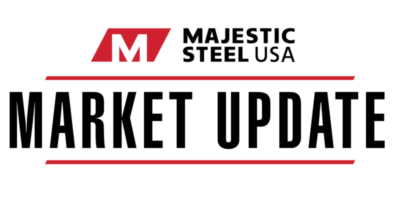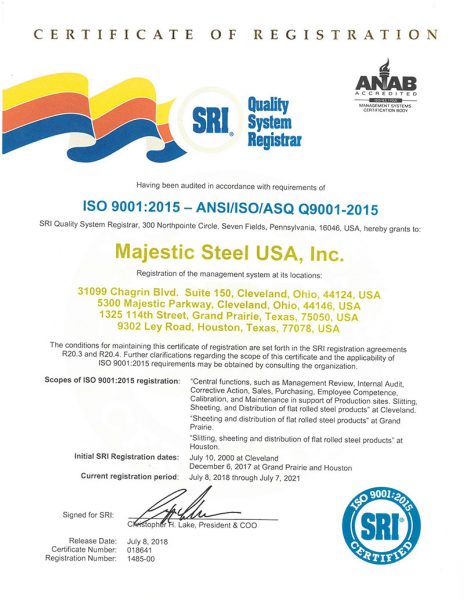Market Update | March 2, 2022
HRC PRICING AROUND THE GLOBE CONTINUES TO RISE
According to Platts, HRC pricing around the globe continues to see an uptick after the recent disruption to supply stemming from the Russian invasion of Ukraine. In particular, Spot HRC prices in Northern Europe and Italy are expected to climb sharply on the back of lower supply and a sharp increase in raw material costs.
INPUT COSTS
Zinc pricing remained firm this week after a sharp increase to start the New Year, as zinc pricing has now remained over $1.60/lb for forty consecutive readings.
– Earlier this week, Nucor formally announced an increase to their coating extras.
– This is the first published increase since September 2020.
Spot iron ore pricing climbed this week, coming in above $140/mt after slipping below that level last week.
– Spot iron ore pricing is 5.6% w/w to $144.75/mt
U.S. Steel announced this week that they will add a 500k ton/year pig iron caster at their Gary Works location to help insource the key raw material.
– Construction is expected to start sometime during this summer and be completed by the middle of 2023.
Crude oil pricing continued to surge this week as U.S. crude price hit its highest level since July 2014 as the Russian invasion of Ukraine continues to intensify.
– Crude pricing first surpassed the $100/barrel mark last Thursday when the initial Russian invasion began but has since climbed over $110/barrel.
– Fears of supply disruptions from the key global exporter, Russia, combined with the already tight global supply market, has helped to push pricing higher.
SUPPLY
After ending a string of four consecutive weekly declines last week, domestic raw steel production once again ticked lower last week.
– U.S. steelmakers produced 1.755 million tons at a 79.7% utilization rate.
– Year-to-date production is 2.9% above the total from the same period last year.
Based on preliminary import licenses, daily average imports in February decreased 21.1% m/m.
– Excluding semi-finished imports, daily avg imports decreased 24.9% m/m.
DEMAND
The February Chicago PMI came in at 56.3, down from 65.2 in January and is at its lowest level since August 2020.
– The twelve-month average slipped to 66.7, however down only slightly from the recent record high of 67.0 in January.
– Any reading over 50 indicates growth in activity, while any reading below 50 denotes contraction.
– All five of the main component declined, with new orders and supplier deliveries seeing the largest decline.
– New orders slowed to a twenty-month low of 53.0, down from 64.2 previously.
The February ISM Manufacturing Index came in at 58.6, up slightly from 57.6 in January.
– The index has now been above 50.0 for twenty-one consecutive months.
– Any reading over 50 indicates growth, while any reading below 50 denotes contraction.
– The largest increases in February came from the new orders and backlog of orders components.
– The new orders component increased to 61.7, helped by a boost in strong expansion of new export orders.
– The backlog of orders component increased sharply, climbing 8.6 points to a historically high level of 65.0.
Total construction spending came in at a $1.677 trillion rate in January, up 1.3% from December and up 8.2% from a $1.550 trillion rate in January 2021.
– This was the eleventh consecutive month in which construction spending increased on a month-over-month basis.
– For the second consecutive month, the ratio of non-residential to residential spending remained at 50:50 of the total.
– This has changed drastically as just three years ago it was 60:40 non-residential to residential.
PRICE
According to Platts, HRC pricing around the globe continues to see an uptick after the recent disruption to supply from Russia/Ukraine.
– Spot HRC prices in Northern Europe and Italy are expected to climb sharply on the back of lower Russian/Ukrainian supply and a sharp increase in raw material costs.
This material, information and analyses (the “Content”) may include certain statements, estimates and projections prepared with respect to, among other things, historical data and anticipated performance. Content may reflect various assumptions by Majestic Steel USA, Inc. concerning anticipated results that are inherently subject to significant economic, competitive and other uncertainties and contingencies and have been included for illustrative purposes. Content is provided AS-IS.

